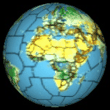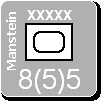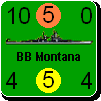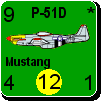Neilster
Posts: 2890
Joined: 10/27/2003
From: Hobart, Tasmania, Australia
Status: offline

|
quote:
ORIGINAL: amwild
My point is that there are circumstances in which complete information on enemy forces may not be available. Maybe my examples weren't the best, but the amount of information available may depend upon the degree of the victory/defeat. A swift, crushing defeat as the result of a surprise attack tends to leave the surviving people in the unit less able to report their circumstances than a prolonged marginal defeat where both sides know where the enemy is.
Yes, but as I've already explained, swift, crushing defeats of the sort you describe are not what land combat in WiF models. In the several days of combat that occurs, over a front about 100km long, plenty of information about what is happening would go up the chain of command. Take the destruction of Army Group Centre in June 1944 for example. The German armies were rapidly crushed by massive and fast moving Soviet forces and although Army Group HQ was unable to effectively intervene, they were all too aware of the strength of the opposition. Overruns might be an exception but that is destruction during movement and I have already argued for possible FoW for adjacent enemy units rather than automatic revelation.
quote:
Opponents could be aware of a unit's type and even its name under this sort of FoW, but may not be informed of any or all of its combat values (replaced by question marks or something so the players know this isn't a glitch) - or vice versa... This may not be common, but it would be interesting on occasion.
I've already discussed this above.
quote:
As to my idea about a player's disrupted units "dissapearing", the computer would hide the disrupted counter (from either its player, the enemy player/AI, or possibly both) as if it was destroyed, until- say - the owning player's next phase. (I'm not exactly a WiF expert here, I've only played a few samll scenarios a decade or more ago, so I'm guessing a bit here.) The unit is still there, and if any player attempted to occupy the hex, the flipped unit would reappear immediately. The enemy would be as able to occupy the hex as they would a hex that is occupied by the flipped unit if it wasn't hidden - except that they may not be certain that it was there until they tried the move and ended up in combat. IIRC, in WWII there were occasions when units blundered into enemy units, one or neither of whom realised that the other was there until the shooting started.
The status of smaller formations can often be ambiguous or unknown but for the reasons I've stated above, the status of 50 000 troops and their associated support infrastructures is likely to be quite well known, even if it's bad news. Also, if a unit is supposedly destroyed, someone, either the phasing or non phasing player, removes it from the map. You haven't explained how this can be handled or the case of shattered units. When you talk of units blundering into one another, you again seem not to grasp the scale of WiF's land units. Corps, and even divisions don't move without dedicated recon units probing ahead and local attacks being launched to find weak points. Small units can bump into one another but not large formations.
quote:
Think of it like this: an infantry unit is attacked by and retreats from enemy armour, and is disrupted, losing its communications in the process. If communications cannot be restored immediately, HQ may think the unit has been destroyed, until such time that communications are restored, or another unit happens upon the unit in question. When the unit retreats, the disorder caused by loss of communications may give the enemy the illusion that they are destroying the cohesion of the unit, which may regoup unnoticed by their enemy a little while later, remaining combat-effective to some a greater degree than the enemy believes.
Naturally, a disrupted unit vanishing like this would be more likely for units that are short on heavy equipment - like infantry units or irregulars. Its harder to hide/miss armour or artillery.
I'm perfectly aware of what you're on about, it's just not appropriate for the massive forces represented by WiF land units. A whole corps never loses its communications. It's a massive organisation consisting of dozens of organic or attached units, each with their own radios, runners, dispatch riders, carrier pigeons and landlines. A whole corps can't regain combat effectiveness without the enemy noticing because of the multitude of sources that would be providing evidence to the contrary. Battalion after battalion would be reporting stiffening resistance or local counterattacks. Regimental HQs would be passing on these reports. Again, you're underestimating the scale of the units involved.
quote:
This sort of missing unit FoW option would work especially well with ships - combat damage could wreck radios that might take days to repair, or the damaged ship might even just show up at the nearest friendly port. Bad weather would be a necessary factor if the ship was part of a convoy or taskforce, but even this wouldn't be impossible. The sea is a big, empty place, after all.
I think there is more of a place for friendly FOW in naval combat but it still has to be remembered that the naval counters in WiF don't typically represent single ships.
quote:
I don't see how aircraft could dissapear and reappear - their short fuel supply makes it far more likely that if a plane doesn't show up more or less when expected, it isn't ever going to. Pilots could be (and were) easily presumed lost and returned later.
As I've already pointed out, air actions represent several days of action. One's own losses and serviceability would be very obvious. A handful of pilots that were lost might turn up several months later after escaping but that's not worth modeling when there are hundreds in an air unit.
Cheers, Neilster
< Message edited by Neilster -- 8/16/2006 11:57:21 AM >
|
 Printable Version
Printable Version

 (how come those 6 Zero's shot down all of my B-17's, this must be a bug). Sometimes it's weeks in the game before you really know if you sunk that battleship or carrier. Just like in real war, combat reports are almost always incorrect. This really adds that fog of war that's missing in all board war games and most computer war games.
(how come those 6 Zero's shot down all of my B-17's, this must be a bug). Sometimes it's weeks in the game before you really know if you sunk that battleship or carrier. Just like in real war, combat reports are almost always incorrect. This really adds that fog of war that's missing in all board war games and most computer war games. 









 ) fundamentalism that had people claiming that the single scale map would ruin the game.
) fundamentalism that had people claiming that the single scale map would ruin the game. 
 New Messages
New Messages No New Messages
No New Messages Hot Topic w/ New Messages
Hot Topic w/ New Messages Hot Topic w/o New Messages
Hot Topic w/o New Messages Locked w/ New Messages
Locked w/ New Messages Locked w/o New Messages
Locked w/o New Messages Post New Thread
Post New Thread